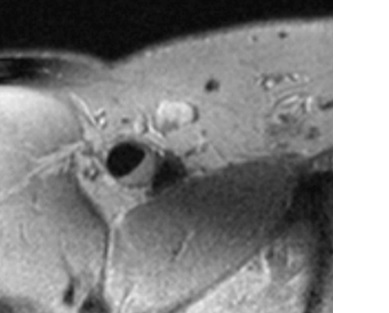'JACC': LDL cholesterol is the main modifiable predictor of atherosclerosis in individuals with no risk factors
CNIC researchers have demonstrated that, after age and male sex, LDL-C is the main predictor of the presence of arterial atherosclerotic plaques
LDL cholesterol (LDL-C), known as ‘bad’ cholesterol, is the underlying reason why many apparently healthy individuals have a heart attack or stroke during middle age despite not having cardiovascular risk factors such as hypertension, smoking, obesity, dyslipidemia, and diabetes. Even at levels considered normal, LDL-C, after age and male sex, is the main predictor of the presence of atherosclerotic plaques in the arteries. This is the finding of research conducted at the Centro Nacional de Investigaciones Cardiovasculares Carlos III (CNIC) and published in the Journal of the American College of Cardiology (JACC). The results of the new study, led by CNIC Director Dr. Valentín Fuster, support the use of more aggressive strategies to reduce LDL-C, including for individuals considered at minimum risk. Fortunately, LDL-C is the main risk factor that can be modified in order to avoid the appearance of atherosclerotic plaques.
As study first author Dr. Leticia Fernández-Friera explained, “Although the absence of classical cardiovascular risk factors is linked to a low risk of cardiovascular events, people in this situation still have heart attacks and strokes. We therefore need to define new markers of early atherosclerosis in these apparently healthy individuals.”
This subanalysis of the PESA study (Progression of Early Subclinical Atherosclerosis) evaluated 1779 study participants who had no classical risk factors. The main goal of the study was to define predictors of subclinical atherosclerosis in this population. The research team evaluated the association of a battery of biometric, analytical, and lifestyle parameters with the presence of atherosclerotic plaques. The results demonstrate that, after age and male sex, the most prominent association is shown by LDL-C. Study author Dr. Javier Sanz commented that “even in people with optimal blood pressure, blood sugar, and total cholesterol, we detected an independent association between the level of circulating LDL-C and the presence and extent of subclinical atherosclerosis.
Cardiovascular prevention
The JACC study shows a relationship between LDL-C levels that are considered healthy in current clinical guidelines and the extent of atherosclerosis in multiple vascular territories: the aorta and the carotid, iliofemoral, and coronary arteries. Using the latest noninvasive vascular imaging technology, the study demonstrates that “atherosclerotic plaques are present in 50% of middle-aged individuals (40-54 years old) with no classical cardiovascular risk factors: non-smokers with no hypertension, diabetes mellitus, or dyslipidemia. These findings could help to improve cardiovascular prevention in the general population even before the appearance of conventional risk factors, an example of primordial prevention,” explained Dr. Leticia Fernandez-Friera.
LDL-C, at levels currently considered normal, is independently associated with the presence and extent of atherosclerosis in this setting, including in those participants with optimal risk profile
Cardiovascular disease is the principal cause of death in the world, and the worldwide high prevalence of cardiovascular diseases makes the development of effective prevention strategies a major health care priority. Current guidelines from the US National Cholesterol Education Program categorize LDL-C levels above 160 mg/dL as high and levels from 130 mg/dL 159 mg/dL as borderline high. The research team on the JACC article believe that the new findings will have important societal and clinical implications because they demonstrate the importance of aggressively reducing LDL-C, both on an individual level and in the general population. Drs. Valentín Fuster and Borja Ibañez affirm that “we should be more restrictive, and consider lowering the threshold values stipulated in the guidelines.” The new results point the way to defining new lower levels of normal LDL-C.
This ambitious project was made possible through the shared commitment of the CNIC and Banco Santander and the leadership of principal investigator Dr. Fuster. The PESA study uses the latest noninvasive vascular imaging technology (magnetic resonance, PET, CT, and 2D and 3D ultrasound) in an attempt to answer important unresolved questions about cardiovascular disease: when and how it begins and what has to happen for it to manifest clinically. As study author Dr. Antonio Fernández-Ortiz explained, “Thanks to vascular ultrasound, we can directly visualize the presence of cholesterol plaques in the carotid arteries, the aorta, and the iliofemoral arteries; and with computed tomography, we can detect calcification in the coronary arteries. With these approaches, we are able to evaluate the progress of the disease in an individual.”
These findings, published in the Journal of the American College of Cardiology, have important societal and clinical implications, since they reaffirm the importance of aggressively reducing LDL cholesterol
Normally, atherosclerosis is detected at an advanced stage, after it has provoked clinical events such as a heart attack, stroke, or another condition. Treatment options after the event are limited, and affected patients experience a permanent decline in quality of life. Moreover, the long term care of these patients places a major cost burden on health care systems. Drs. Fuster and Sanz conclude that “the ability to identify patients with the disease before the appearance of symptoms could help to avoid or reduce the associated complications and translate into an enormous societal and economic benefit. The major impact of the PESA project will felt over the long term, 15 or 20 years after its launch. At that stage, we will be able to relate the initial study findings to participants’ clinical progress.”











